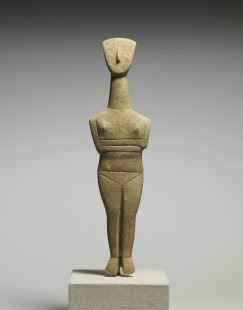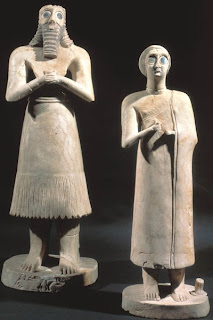 Portrait of a Flavian Woman c. A.D. 90
Portrait of a Flavian Woman c. A.D. 90This elegant portrait bust is very detailed and quite delicate. Notice the soft textures of her hair and flesh. The woman appears gentle, sweet and flawless. She is certainly a woman revered and idealized. Additionally, she is young. Previously, only older women whose lives made them worthy of the art, were sculpted. Here; however, we see that beauty has become a reason for the immortalization of art.



